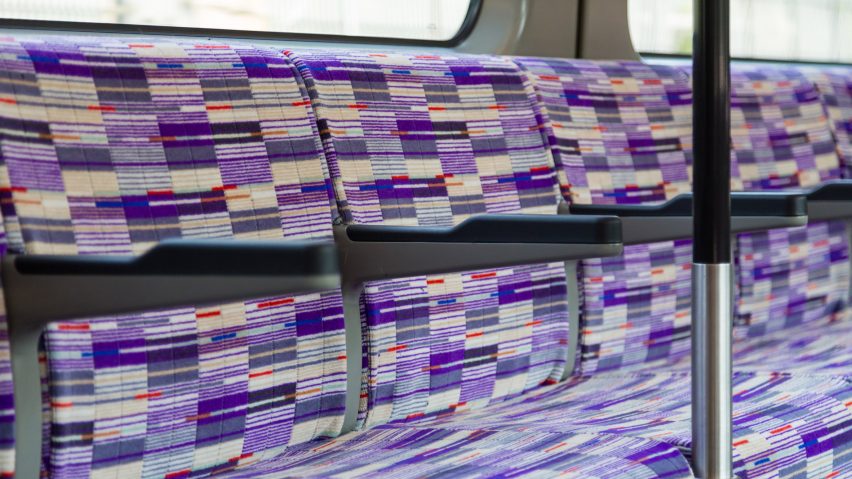
Wallace Sewell designs purple pinstripe fabric to create "a sense of speed" for the Elizabeth Line
As London's high-speed rail link the Elizabeth Line nears completion, British textile design studio Wallace Sewell has revealed its pinstripe-patterned seat moquette, which takes cues from royalty.
The seats on the new 200-metre-long Crossrail trains will be covered in a regal purple colour and lined in a pattern created by Wallace Sewell when the line opens later this year.
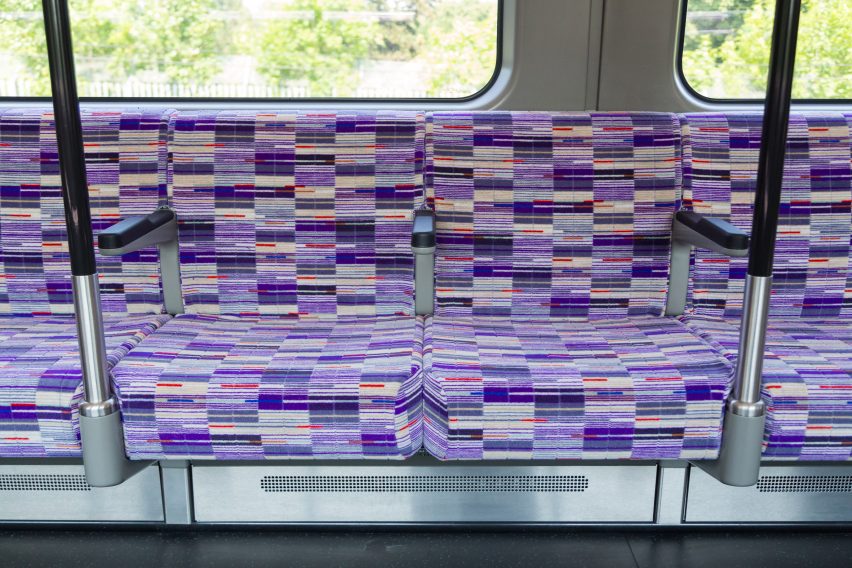
"The fabric is a progression of the original design on the Liverpool Street to Shenfield line, inspired by travelling the route and abstracting the surroundings into rectangles and linear motifs," the studio said.
"The Elizabeth Line then adds more pinstripe details, as a nod to the suits in the City of London and creating a sense of speed as the line travels from east to west."
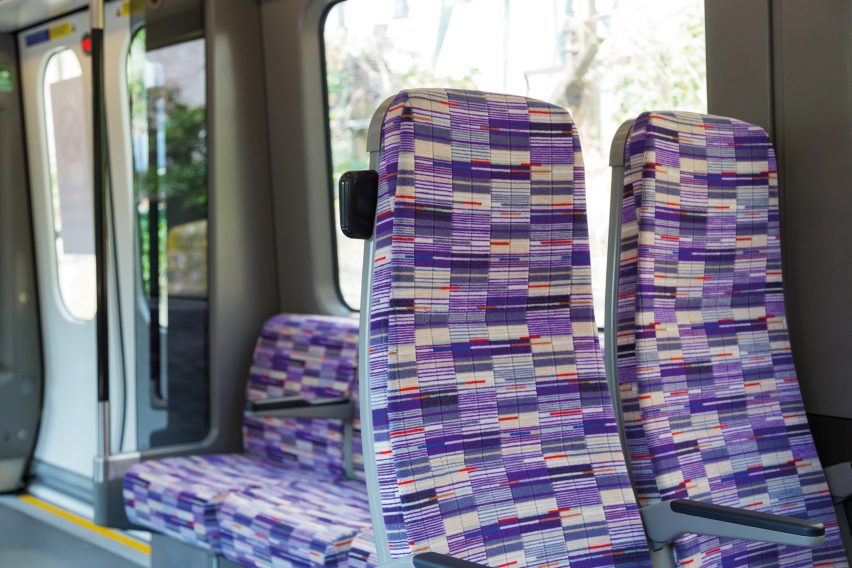
The designers at fabric manufacturer Camira, which was responsible for producing the textile, chose purple in the Pantone shade 3515 C for the upholstery of the 70 new trains, as it matches the purple colour of the Elizabeth line on the London Underground map.
They also wanted the colour to tie the trains to the current British monarch, Queen Elizabeth II, after whom the £18.25 billion line is named.
Purple is synonymous with the royal family. The same rich gradient of purple is the colour associated with the Queen's Platinum Jubilee, which will take place this year.
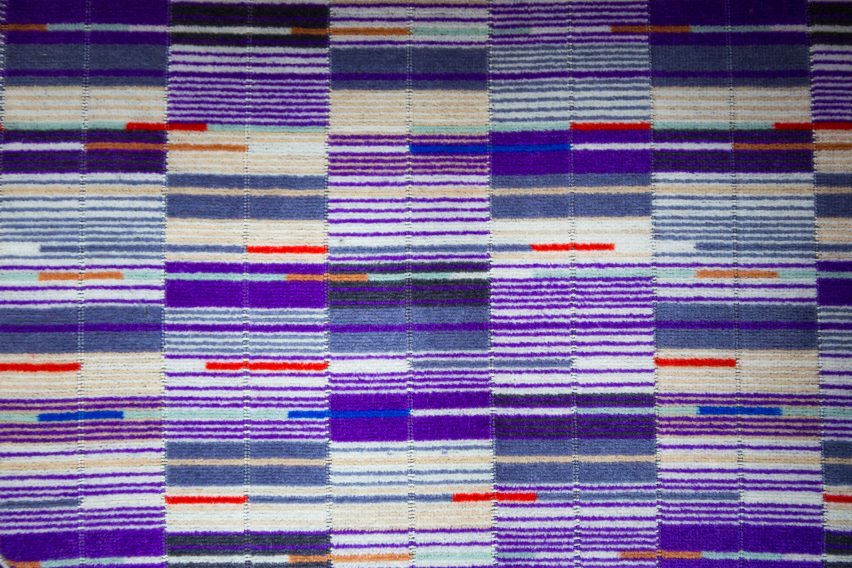
"We developed a palette which started with the distinctive colour of the line and added in warmer and lighter shades to create a fabric which appears purple at first glance, with layers of depth and warmth upon close inspection," explained Sarah Mallinson, senior transport designer at Camira.
"When it came to bringing this design to life in fabric, we created yarns which exactly reflected the Pantone references used in Wallace Sewell’s drawings," she told Dezeen.
"The end result is distinctive and contemporary, with an elegant nod to the monarch it represents."
The fabric is woven by Camira on wire looms to create a straight and looped pile moquette – the transport textile that is used on all London Underground tube lines.
The brand chose a simple design as it has to appear on several hundred thousand seats, which will require regular upholstering and replacement after wear.
"The choice of interior colours and moquette are designed to perform well over time, to be easy to maintain, be compliant to various standards regarding contrast and to create a calm and consistent look and feel that won’t date," Mallinson said.
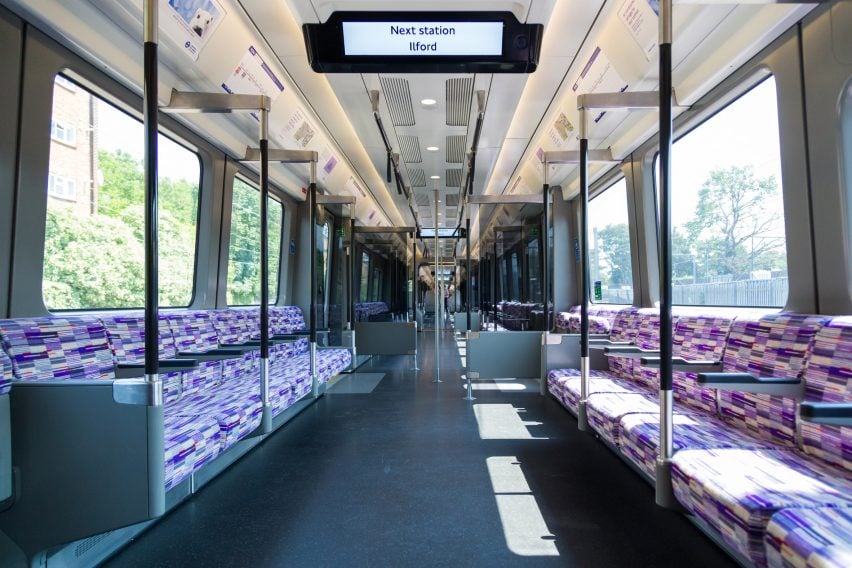
Set to open fully in the next few months, the new high-speed train link from east to west London is expected to carry 200 million passengers each year. It is being built by Crossrail, a railway concession of London Underground operator Transport for London.
The trains feature a mix of metro-style and bay seating, as well as fold-away chairs to create space for wheelchair users.
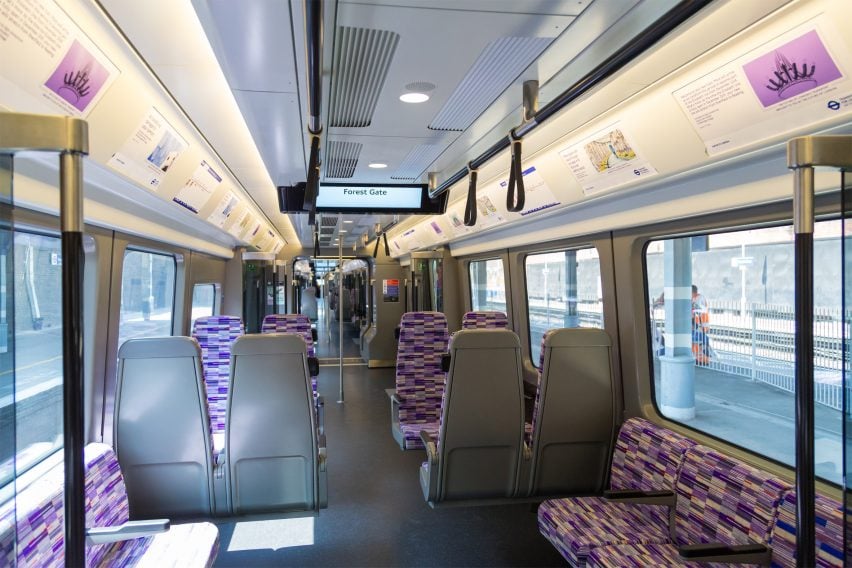
"Moquette is just one element within a train interior: all colours, materials and finishes within the interior have to be orchestrated to create a calm, compliant and easily maintainable interior that reflects not just the unique line identity but also that of London Underground," said Transport for London.
Wallace Sewell is responsible for many London Underground seat fabrics, including the Picadilly Line moquette which features several London landmarks. The pattern recently appeared on English football team Arsenal's kits.
The studio also recreated the Prellerhaus blanket – a blanket for Bauhaus's Dessau dormitories – in its original palette and two new colourways.